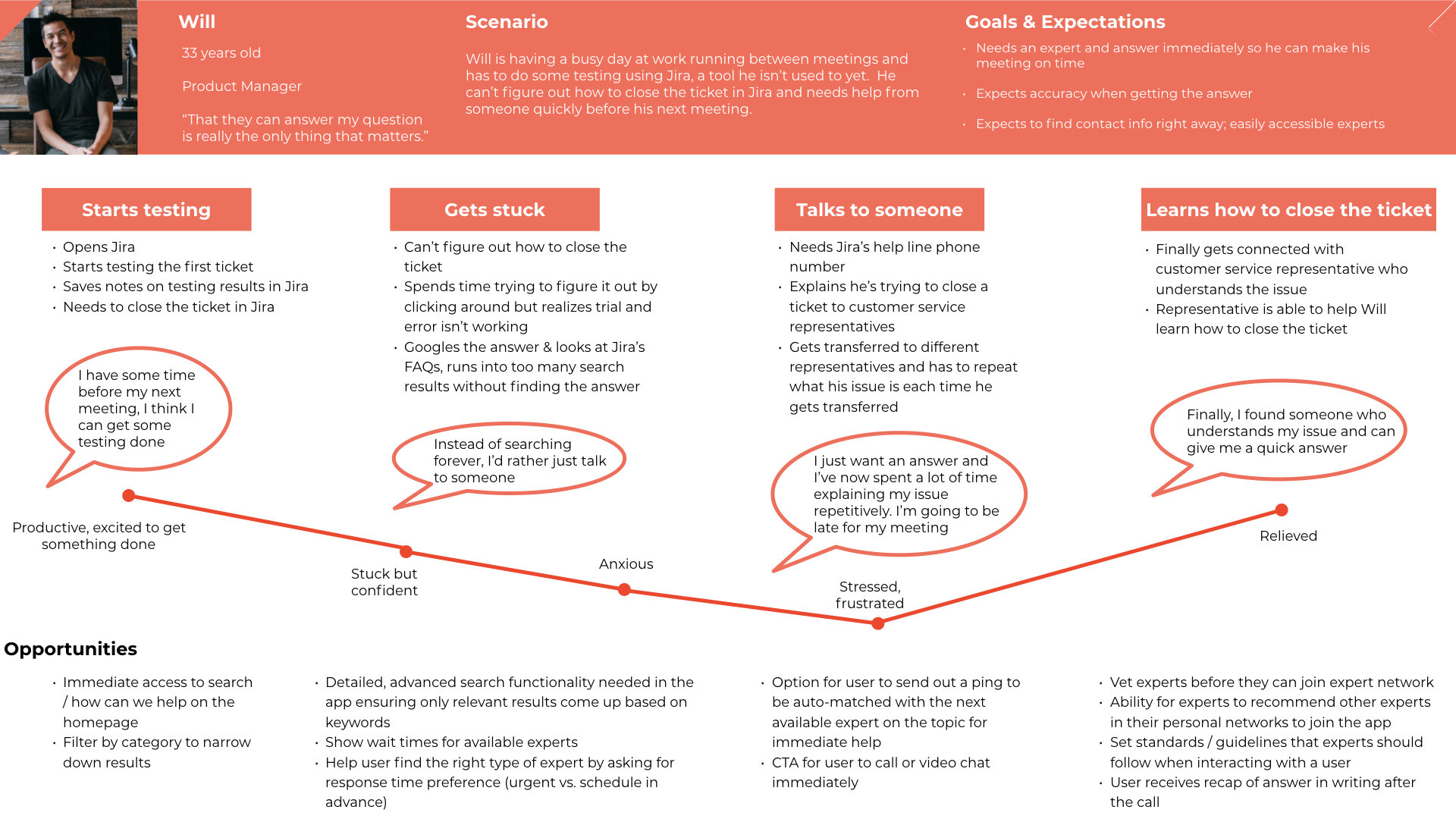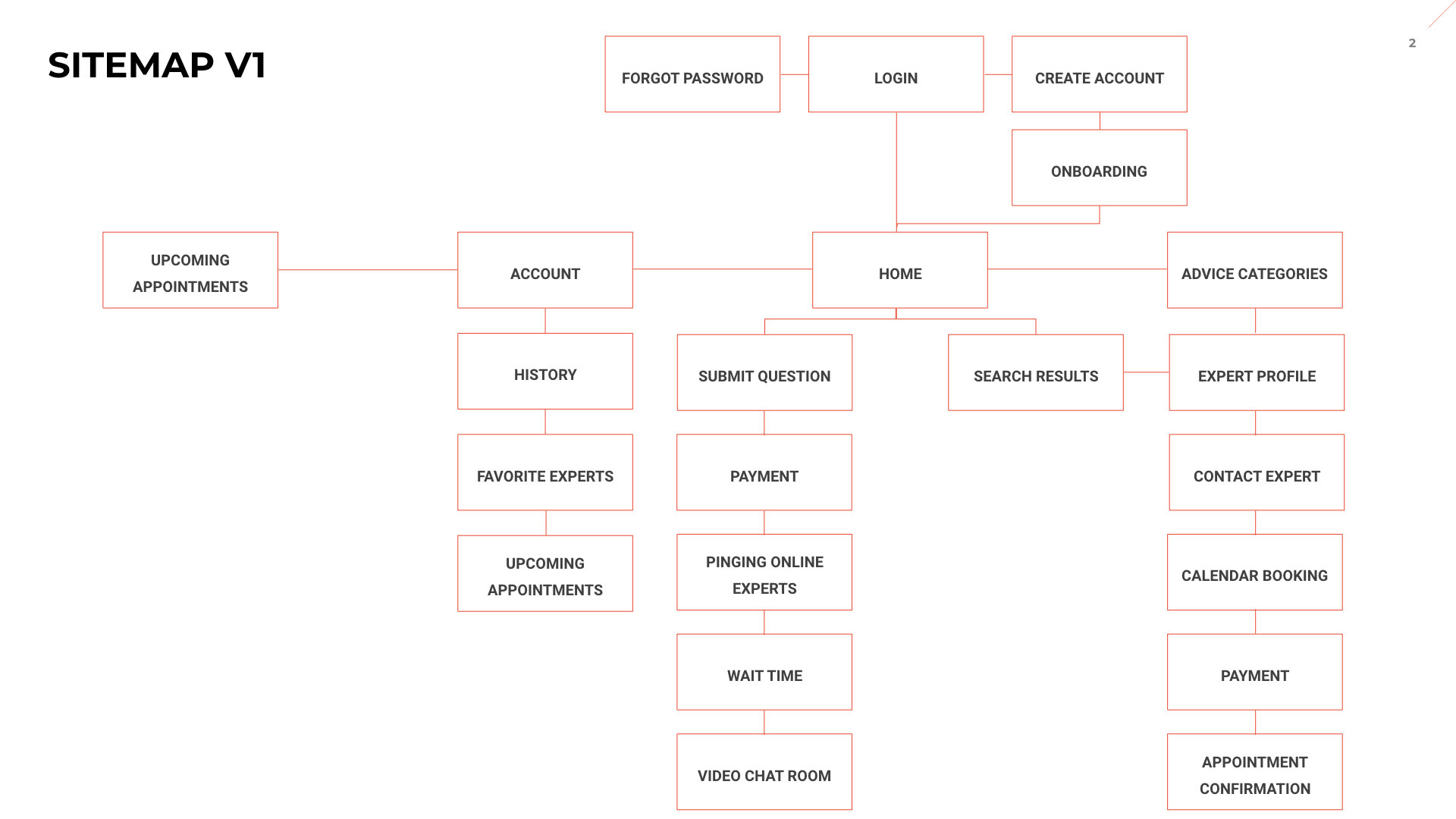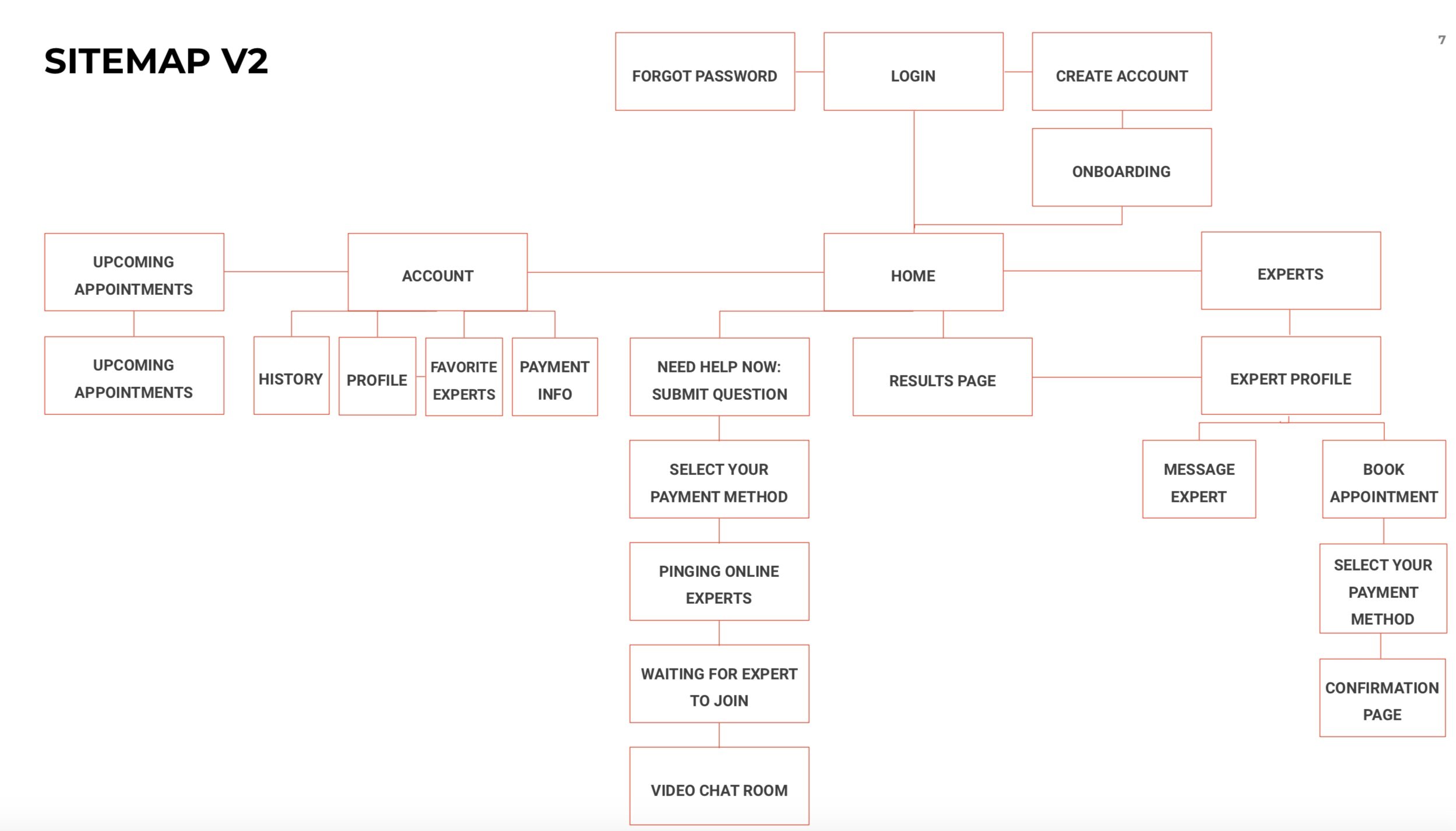Next steps and what I learned
Updated hypothesis
I believe that the changes made to the app’s UI, navigation structure, user flow to get quick help, and user flow to schedule an appointment, have improved the ability for them to complete core tasks. I would know this to be true if performing both tasks passes another round of usability testing.
Next steps
Validate the updated hypothesis
I would do another round of usability testing to uncover any new issues with the changed navigation and user flows. Since these are core features for MVP, it’s important to make sure they work before moving forward with new functionality.
As I polish the app and the usability for core functionality gets better, I can start adding more features and user flows to test. Preference testing for UI changes could be used to help the look and feel of the app without a burden on the participant’s time as well.
Specific improvements for the future
Improve the UI
Add rewarding interactions for users to make them feel supported and good about seeking advice from an expert
Add more color but maintain modern, clean feel of the UI
Build more features and rethink business requirements
Further define the payment and business model
Additional improvements
How can the app better guide and improve the way a user makes a decision on who they want to talk to? Is there other information about experts that would help sway their choice?
What filters in search results would be key? Is there another way to display search results that would be fair to experts but help users make the best decision?
Eventually start thinking of the expert’s view and features needed in the app
What I learned and how I’d adjust my process in the future
Test earlier and often
Moving forward and if I were to re-do the project, I would test and iterate a few times at the low or mid-fidelity stages of my wireframes until the user flows were validated. This would ultimately save me time and help me move faster instead of investing a lot of time upfront shifting the wireframes to high fidelity before knowing if the user flows actually work.
Continuously revisit the personas and user journey maps throughout the entire process
In the future, I would review these deliverables more consistently and often. This would help me keep them top of mind while moving wireframes from low to mid to high fidelity, in creating the design system, polishing the UI, and when iterating.















